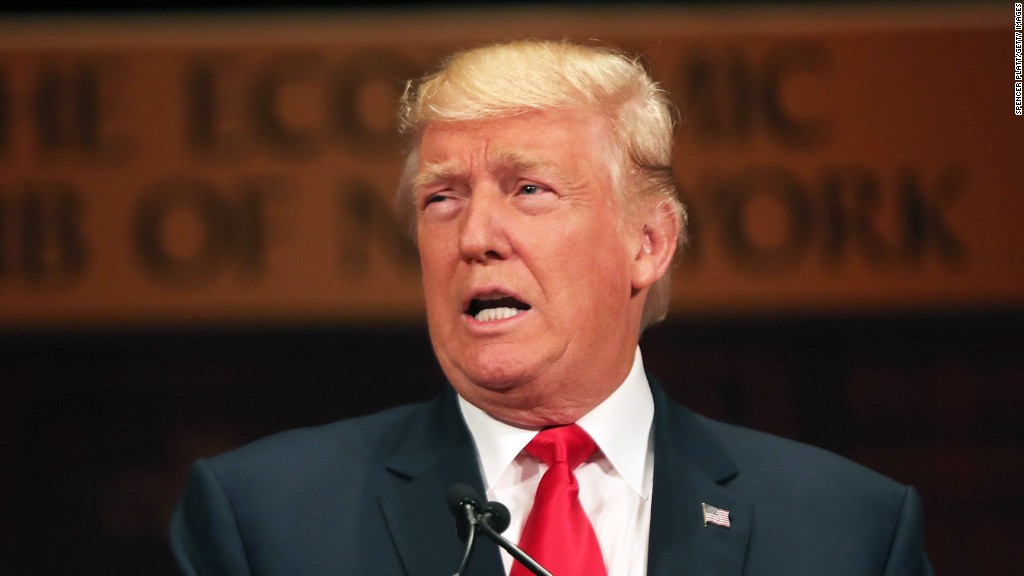
Donald Trump has lowered the cost of his once-gobsmackingly expensive tax plan.
But even his revised version, which he detailed Thursday in a speech at the Economic Club of New York, is still pretty pricey, costing at least $2.6 trillion over the first decade by his campaign's most optimistic estimates.
Trump claims that $1.8 trillion of that would be paid for by his "growth-induced savings from trade, energy and regulation reform."
The other $800 billion, he said, would come from something called the Penny Plan or One Cent Solution. The idea: Cut spending by 1% every year. The only areas that would be exempt are defense and entitlement programs such as Medicare and Social Security.
Related: Trump makes major changes to his tax plan
Proponents -- and now Trump -- tout the plan as no biggie.
"If we save just one penny of each federal dollar spent on non-defense and non-entitlement programs, we can save almost $1 trillion over the next decade," he said.
Sounds easy. But it's not nearly as practical or painless as it may sound.
For starters, by exempting entitlements and defense, he's walling off the majority of spending in the federal budget.
That means the 1% annual cuts would be focused on the smallest part of the budget, which is already on track to fall to its lowest level as a share of GDP since 1962, according to the Congressional Budget Office.
Related: Domestic spending is near 53-year lows. Yet Congress keeps cutting
"This focuses on savings in the parts of the budget that need it the least," said Maya MacGuineas, president of the bipartisan Committee for a Responsible Federal Budget.
Second, "he includes no detail on how to achieve these cuts," MacGuineas noted.
Across-the-board reductions may sound simplest, but that's a heavy-handed way to manage the financing of federal programs on which Americans rely -- from food safety and air traffic control to infrastructure repair and Head Start programs to the running of national parks and museums.
Third, costs tend to rise over time. So if a program's budget can't even keep pace with inflation, the effect of an annual 1% cut in real terms could seriously constrain a program from meeting its basic mission over time. MacGuineas estimates the Penny Plan would slash spending on the non-defense domestic budget by 25% over a decade.
Lastly, the Penny Plan would do next-to-nothing to address the country's growing debt, which Trump frequently laments. Thanks to demographics and rising health costs, entitlement spending is by far one of the biggest drivers of that debt.


